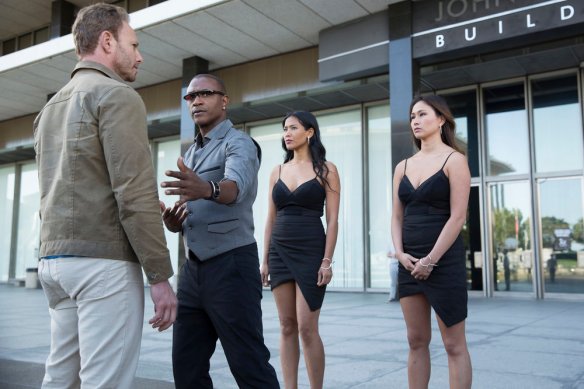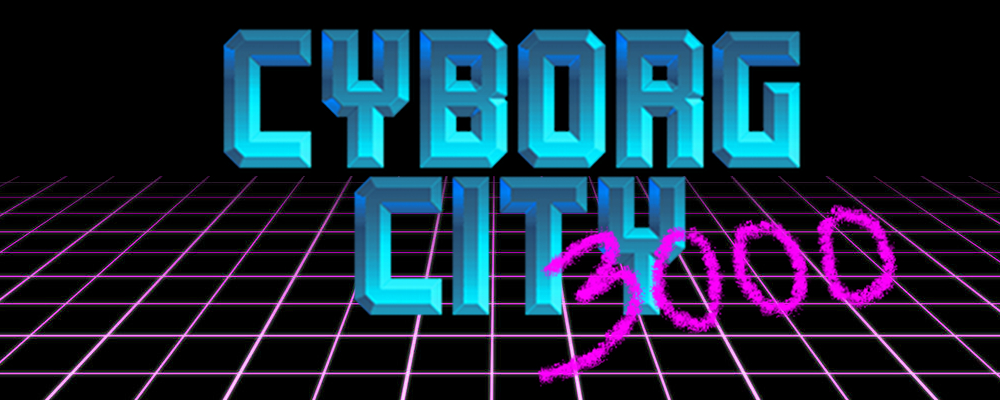 I should be the ideal audience for “Sharknado: The Fourth Awakens.” I find a truly bad movie to be as much of a fascinating miracle as a truly good one, just for different reasons. I can excuse all kinds of bad filmmaking if the movie gives me something memorable that says something about who or what brought that movie into being. I have sat through “Samurai Cop” and “MAC and Me” and “Rock ‘n Roll Nightmare.” I have seen “Miami Connection” more times than “The Philadelphia Story.” I have sought out and received Tommy Wiseau’s autograph.
I should be the ideal audience for “Sharknado: The Fourth Awakens.” I find a truly bad movie to be as much of a fascinating miracle as a truly good one, just for different reasons. I can excuse all kinds of bad filmmaking if the movie gives me something memorable that says something about who or what brought that movie into being. I have sat through “Samurai Cop” and “MAC and Me” and “Rock ‘n Roll Nightmare.” I have seen “Miami Connection” more times than “The Philadelphia Story.” I have sought out and received Tommy Wiseau’s autograph.
But there’s a difference between gonzo outsider art like “Miami Connection” or an audacious failure like “Jupiter Ascending,” and a lazy, pandering mess like “Sharknado: The Fourth Awakens.” Ever since the first movie, the “Sharknado” series has been sold as a ready-made entry into the “so bad it’s good” canon, but with each successive movie it proves more emphatically that there is no limit to “bad” before a movie boomerangs back to “good,” and that simply keeping its foot on the gas is no substitute for knowing where the hell it’s going in the first place.
The movie opens with a “Star Wars” text crawl explaining that it has been five years since “Sharknado 3” and hero Finn Shepard lives peacefully on a farm in Kansas with his family, including little Gill Shepard, who survived being born inside a shark that had eaten his pregnant mother in space. There have been no sharknado events since that time, thanks to Tommy Davidson’s character, a tech billionaire who invented satellites that zap sharknados before they happen.
Wouldn’t you know it, though – a sandstorm rips through Las Vegas, pulling up all the sharks from the Strip’s new “Shark World” casino. Finn and his family are now pressed into service to stop a whole new series of sharknados while at the same time stopping long enough to interact with an endless series of stunt-casting cameos.
It’s pointless to try and detail all of the things wrong with “Sharknado: The Fourth Awakens” when every symptom the movie has can be traced back to a single disease – laziness. Every identifiable element of the movie, from the script’s hacky “Star Wars” references to the cut-and-paste CGI effects to the actors’ performances, feels like the first time it was attempted.

Nothing summarizes this better than Tara Reid. Her character was seemingly killed in the cliffhanger at the end of “Sharknado 3,” but thanks to a poll on social media it turns out she survived being crushed by a piece of falling spaceship. After being in a coma for four years, she was turned into a cyborg by her scientist father, played by Gary Busey. Her hand transforms into weapons that squeeze out of her wrist looking like “Roger Rabbit” props from Acme, and she pronounces the word “chainsaw” like it rhymes with “pizza.” The script barely resolves the cliffhanger set up in the last movie, the effects look amateurish, and Reid is reading her lines for the first time as they’re filming her. Busey is another problem – why cast an actor known for his outsized screen presence and off-kilter behavior and then give him nothing interesting to do or say?
The answer, sadly, is that the mere presence of Gary Busey is supposed to be enough, and that’s the attitude the filmmakers take with the rest of “Sharknado: The Fourth Awakens’” guest stars. From Carrot Top to Vince Neil to Paul Shaffer, the movie’s cameos exist only to put a recognizable face in front of the camera just long enough for a computer shark to bite it off or crush them to death. The “lucky” ones get more than a single scene, like “Clueless” star and current political commentator Stacey Dash. She plays the mayor of Chicago, who appears several times to blame Finn for the sharknadoes and vow revenge. But before she even gets a scene with Finn, she is crushed by Finn’s Kansas farmhouse like the Wicked Witch of the East. (In addition to numerous “Star Wars” references, this movie also contains what I believe are the first references to “The Wizard of Oz” in the “Sharknado” series, which seem long overdue.)
Another cameo that serves no real purpose is the appearance of Caroline Williams, the star of “Texas Chainsaw Massacre 2,” who runs a chainsaw store with her brother “Gunnar” and Dog the Bounty Hunter. Gunnar, in another sign of this movie’s intense cheapness and laziness, is not Gunnar Hansen, the original “Leatherface,” but the guy who played Leatherface in 2013’s “Texas Chainsaw 3D.” I love “Texas Chainsaw Massacre 2,” and I’m glad the makers of this fourth “Sharknado” movie apparently love it, too, but that’s not enough to make this movie enjoyable. The only real laugh I got out of the movie was due to the very sudden appearance of Gilbert Gottfried, who gets to say the words “bouldernado,” “oilnado,” “lightningnado, and “cownado” before his character gets it.

This movie might also feature the first-ever gratuitous cameo by a car, as Steve Guttenberg appears in L.A. to loan Finn his 1957 Plymouth Fury named “Christine,” from the John Carpenter film of the same name. Christine makes it three blocks before she’s crushed by a giant ball of twine and sharks. At least, that’s what we are led to assume happens, the editing doesn’t make it very clear.
With a script this terrible and special effects this cheap, it can be easy to overlook just how bad “Sharknado: The Fourth Awakens” is from a basic filmmaking standpoint. That’s why I wrote myself a note to remember to mention it. The editing is haphazard, shots are framed with people’s faces half in-frame, and almost every shot is a medium close-up to cover up how cheap or non-existent the sets are. I would call it “student film-quality” if I believed anyone involved in the making of it actually learned anything about making a movie.

Of course, some would argue that “Sharknado: The Fourth Awakens” is supposed to look terrible. The acting is supposed to be stiff and emotionless. The special effects are supposed to be ugly and cheap. This is a bad movie, after all, what did you expect? That’s a lame excuse, since there have been movies made to be “bad on purpose” that still manage the feat of being entertaining in more than theory. “Black Dynamite,” for example, was made with the understanding of what makes bad movies funny, rather than assuming a movie made badly becomes funny by virtue of its shoddiness.
The “Sharknado” sequels have been described as “self-aware,” meaning they were made with the understanding that they were terrible and reveled in it. I don’t think “self-aware” is the right way to describe something like this movie, because if the filmmakers truly had any self-awareness at all, “Sharknado: The Fourth Awakens” wouldn’t exist.
